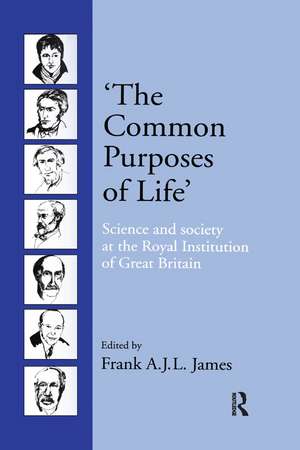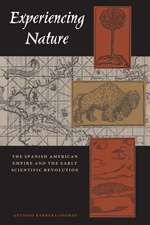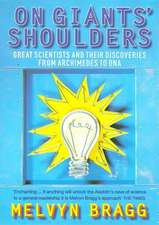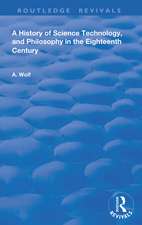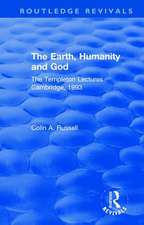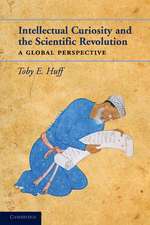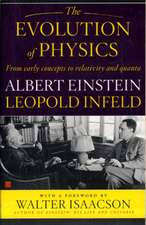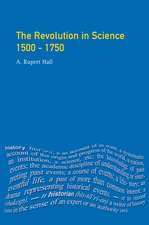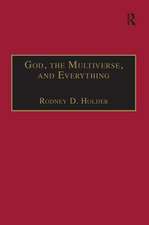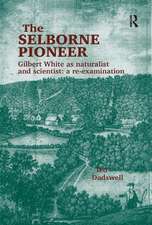‘The Common Purposes of Life’: Science and Society at the Royal Institution of Great Britain
Editat de Frank A. J. L. Jamesen Limba Engleză Paperback – 23 aug 2018
Preț: 224.51 lei
Preț vechi: 263.07 lei
-15% Nou
Puncte Express: 337
Preț estimativ în valută:
42.96€ • 45.94$ • 35.82£
42.96€ • 45.94$ • 35.82£
Carte tipărită la comandă
Livrare economică 17 aprilie-01 mai
Preluare comenzi: 021 569.72.76
Specificații
ISBN-13: 9781138383425
ISBN-10: 1138383422
Pagini: 472
Dimensiuni: 156 x 234 mm
Greutate: 0.87 kg
Ediția:1
Editura: Taylor & Francis
Colecția Routledge
Locul publicării:Oxford, United Kingdom
ISBN-10: 1138383422
Pagini: 472
Dimensiuni: 156 x 234 mm
Greutate: 0.87 kg
Ediția:1
Editura: Taylor & Francis
Colecția Routledge
Locul publicării:Oxford, United Kingdom
Cuprins
Contents: Preface, Susan Greenfield; Introduction, Frank A.J.L. James; 'A national treasure house of a unique kind' (W.L. Bragg): Some reflections on two hundred years of institutional history, Sophie Forgan; Acquiring and constructing the Royal Institution in Mayfair, H.J.V. Tyrrell; Forging identity: The Royal Institution's visual collections, G.M. Prescott; Establishing the Royal Institution: Rumford, Banks, Davy, David Knight; Running the Royal Institution: Faraday as an administrator, Frank A.J.L. James; John Tyndall at the Royal Institution, J.D. Burchfield; A chemist in the hyperarctic: James Dewar at the Royal Institution, William H. Brock; 'Temporary hotel accommodation'? The early history of the Davy-Faraday Research Laboratory, 1894-1923, Katherine D. Watson; Craftsmanship and Social Service: W.H. Bragg and the Modern Royal Institution, Jeff Hughes; 'A Big Happy Family': The Royal Institution under William and Lawrence Bragg, and the history of molecular biology, Viviane Quirke; L'Affaire Andrade or how not to modernise a traditional institution, Frank A.J.L. James and Viviane Quirke; Appendix 1: Fifty Years at the Royal Institution, Ralph Cory; Appendix 2: Some memories of the Royal Institution and its laboratories 1900-1950, W.J. Green; Appendix 3: Officers and professors of the Royal Institution 1799-2002, Appendix 4: Biographical register; Bibliography; Index.
Notă biografică
Frank James is Reader in the History of Science at the Royal Institution where he is also Keeper of Collections. His main research interest is in the history of the physical sciences in the nineeteenth century and their relations with other areas of society and culture. He is editor of the Correspondence of Michael Faraday of which four volumes have so far been published
Recenzii
'... a carefully programmed and executed compilation about one of the most representative British scientific institutions. It balances the internal and external aspects well and defines institutional settings and the role of single personalities.' History and Philosophy of the Life Sciences '... for those interested in the history of British science, popular science, scientific institutions, laboratory equipment or scientific biography, this book will provide hours of informative reading. Time will undoubtedly prove it to be a superior piece of work.' Nuncius
Descriere
For more than two hundred years the Royal Institution has been at the centre of scientific research and has provided a cultural location for science in Britain. Within its walls some of the major scientific figures of the last two centuries - such as Humphry Davy, Michael Faraday, John Tyndall, James Dewar, Lord Rayleigh, William Henry Bragg, Henry Dale, Eric Rideal, William Lawrence Bragg and George Porter - carried out much of their research, with discoveries from sodium to x-ray crystallography. The success of the Royal Institution in research and in locating science within general culture led it to being used as a model for other institutions, most notably by the founders of the Smithsonian Institution in Washington. Much has been written about the scientific work in the Royal Institution, but much less about the cultural settings which allowed it to become such a major site for the creation of scientific knowledge. The purpose of this book is to examine these aspects of its history.
